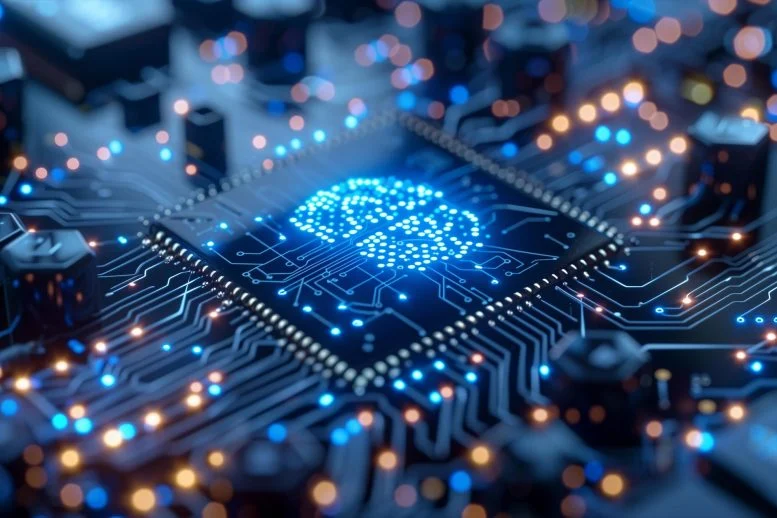"Researchers have developed an innovative phase change memory device that promises low power consumption and reduced manufacturing costs. This development, potentially replacing DRAM and NAND flash memory, is notable for its efficiency and could significantly impact the future of memory and neuromorphic computing technology. Credit: SciTechDaily.com" (ScitechDaily, New Ultra-Low Power Memory for Neuromorphic Computing)
The new neuromorphic computers require lots of processors. And that's why those systems require new microchips, that have low energy use. Low-energy microchips keep the temperature in computers low. Same way minimizing the cable length minimizes radio waves and temperature in neurocomputing.
Silicon carbide plates can act as artificial synapses.
Researchers can create artificial synapses in the artificial neural network using silicon carbide plates. The silicon carbide plates that offer "Eternal memory" can offer a new way to make artificial axons to communicate. The system drives information into the silicone carbide mass-memory. Then, the system transports information from the first silicon carbide plate to the second plate.
Those silicon carbide plates can be in the points where those artificial axons meet. That makes it possible for the wires that connect microprocessors can act like real axons. The silicon carbide plates are like synapses in the neural network. And they can exchange data through the artificial synapsis hole. Those silicon carbide plates can make it possible to connect computers with real neurons with ultimate accuracy.
The low-energy microchips can control things like intelligent liquids. Those intelligent liquids make it possible to create new types of robots that are like amoebas.
"The information is written in optically active atomic defects by a focused ion beam (left) and read using the cathodoluminescence or photoluminescence (right). Credit: M. Hollenbach, H. Schultheiß" (ScitechDaily, Unlocking the Secrets of Eternal Data With Silicon Carbide)
Above: Diagram of a chemical synaptic connection. (Wikipedia, Synapse) Engineers can replace that chemical connection using an electric connection. In those systems ions or laser rays transport data to miniature microchips. Then the system transports information into the mass memory. The neural computer can use feedback the receiving system sends information back to the sender to make sure that the information that it got is not changed.
Superconducting and photonic computers are tools that help to create new and more powerful neural computers.
The low-energy microchips can keep the system temperature lower. And that thing is important in computing. The 2D semiconductors are tools that make nano-size microchips possible. The ability to control the semiconductors makes superconducting computers hard to make. Superconducting computers cannot close the gate using semiconductors. And then another problem is how to drive information from the regular computers to superconducting computers.
"Harvard researchers have created a versatile programmable metafluid that can change its properties, including viscosity and optical transparency, in response to pressure. This new class of fluid has potential applications in robotics, optical devices, and energy dissipation, showcasing a significant breakthrough in metamaterial technology. (Artist’s concept). Credit: SciTechDaily.com" (ScitechDaily, Not Science Fiction: Harvard Scientists Have Developed an “Intelligent” Liquid)
Superconducting computers require very low voltage. Extremely low temperature makes those systems superconducting. One version of how to drive information into superconducting computers is to use lasers. The superconducting computers are in the freezer which keeps them stable. Then lasers will transport information into the superconducting computer through windows. The laser system sends data to the photovoltaic cells. Then those photovoltaic cells can transform data that light impulses carry into electric impulses.
One version of how to make the superconducting computer's gate operate is to use a laser trap. The laser trap or laser gata is a laser ray that denies electricity or optical signal travel through it. When a gate laser (or maser) operates. Electricity cannot cross that line. That means the gate is closed. The coherent light or electromagnetic field denies the lower energy beam travel through it.
The semiconductors are required to control electric flow in microchips. One possibility is to use photonic computers. The small optical crystals can make it possible to aim laser rays into the right light cells. In photonic computers, laser rays replace the electric wires. The photovoltaic cells can transform the photonic information into an electric form.
https://scitechdaily.com/new-ultra-low-power-memory-for-neuromorphic-computing/
https://scitechdaily.com/not-science-fiction-harvard-scientists-have-developed-an-intelligent-liquid/
https://scitechdaily.com/unlocking-the-secrets-of-eternal-data-with-silicon-carbide/
https://en.wikipedia.org/wiki/Dynamic_random-access_memory
https://en.wikipedia.org/wiki/Flash_memory
https://en.wikipedia.org/wiki/NAND_gate
https://en.wikipedia.org/wiki/Synapse




Comments
Post a Comment